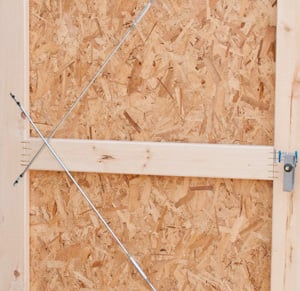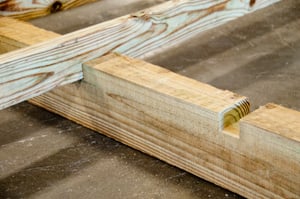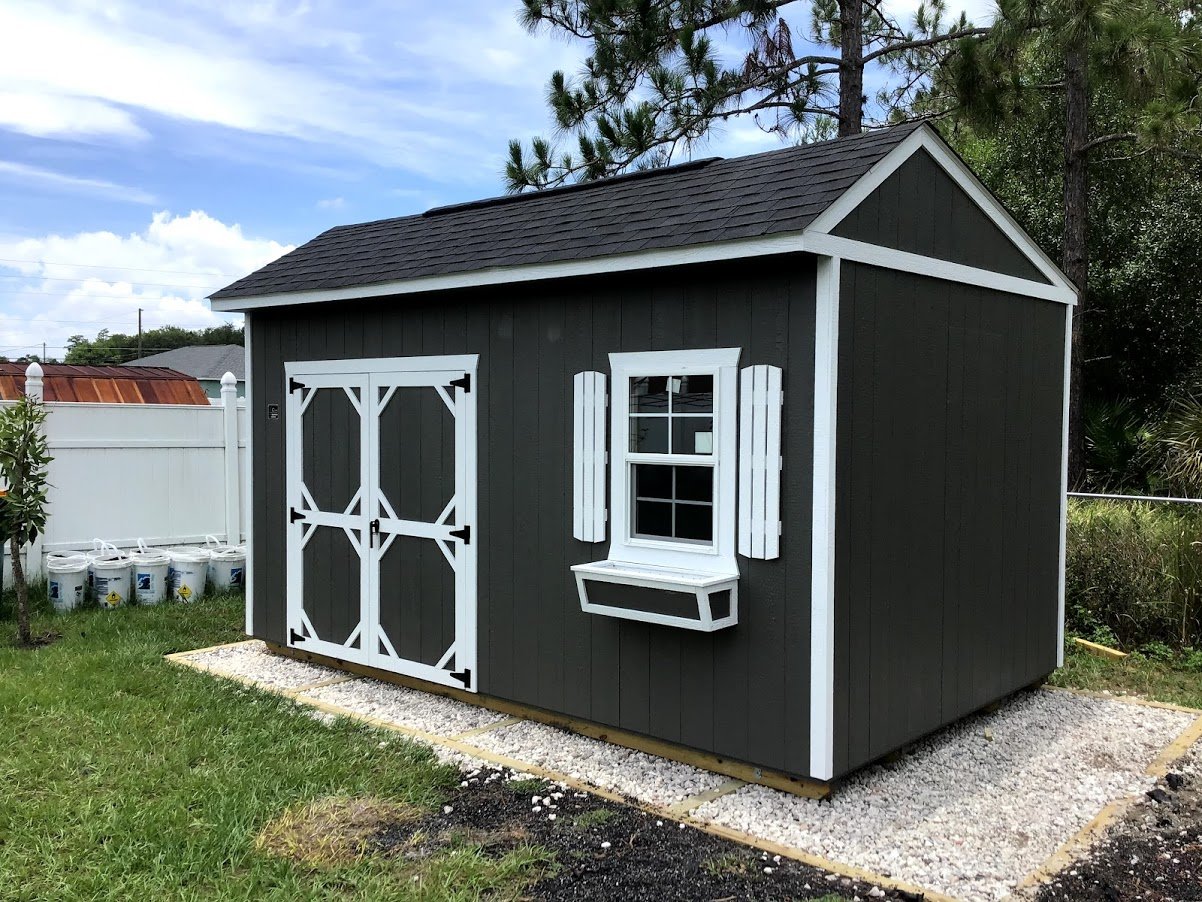We’ll be honest, in 1984 we didn’t build the best shed. Two businessmen, father and son, accidentally fell into the business because they had excess lumber they needed to sell. So, they asked a local carpenter to build a shed. It was a great shed, but it wasn’t the best shed.
Building the best shed takes time, innovation and quite frankly failure.
“Many of the things we’ve developed from a features standpoint were developed because of customer issues. When we first started building these, we didn’t build as good of a portable building. All of those features have been developed over the last almost forty years. We went through the pain to see what was needed and what it takes to give our customer the best product they can own in a portable building,” Greg Cook, president and co-founder said.
Can you buy a building cheaper? Yes. Can you buy a building that has the same features as one of our buildings at a lower price? No, or at least so far we haven’t had anyone take on our lowest price guarantee.
“People may tell you that price is everything. But what people want is value,” Greg explained. “They want to know that ‘I bought a very high end product for the least amount of money…that my investment is a good one.’ One of my sales guys came up with this phrase: buy your last building first. Our whole focus is to build a portable building for someone that’s of the best value in the industry; and we guarantee that with our personal guarantee.”
So, what have we done to continue building the best buildings possible?
Greg walks us through it: “I often say, don’t just talk about the feature but talk about the consequence of not having the feature.” Here are just a few examples that set apart a normal shed from a Cook shed.
Additional Door Features:
 The shed is no good if you can’t get into it. We’re going to go out on a limb here and say that the majority of our customers aren’t buying a shed simply because it looks good in their backyard. But, sheds aren’t always equipped to last when the shed’s doors are only a piece of wood on a hinge with a handle attached.
The shed is no good if you can’t get into it. We’re going to go out on a limb here and say that the majority of our customers aren’t buying a shed simply because it looks good in their backyard. But, sheds aren’t always equipped to last when the shed’s doors are only a piece of wood on a hinge with a handle attached.
Better Method: Years ago we had a customer call up and tell us their door isn’t operating right. So, we started asking questions to see what would cause that. We discovered it needed cross bracing. All Cook sheds now have an adjustable tension rod on their doors to allow them to adjust the door if it ever tries to sag.
Consequence of not having it: You might try to open your door a few years from now and discover it has sagged and now it’s stuck and won’t open, rendering you frustrated and your shed useless.
Durable Skid System:
We’re talking here about the skids or the runners your building sits on. Some builders may just sit two pieces of wood on the ground and then sit the floor joists on top of that wood, using the angle nail or toenail method to attach the two.
Better method: At Cook, we notch ¾ of an inch down into the skid everywhere a floor joist is going to sit. So we set the floor joist down into the notch. So we basically sew the skid system, or the system the building is going to move on, into the building itself.

Consequence of not having it: Let’s say you decide you want to move your shed but it’s settled into the mud. So you tie a chain to the skid and to your tractor and start to move. The unseen problem is that it was built using the toenail method and all of a sudden you find yourself pulling the side of the building off or ripping the skids out from under the building altogether.
Treated Floors for Longevity:
There are different levels of pressure treated materials. Some are treated for above ground, some for ground contact and some for below ground. So when you’re searching for a shed, make sure you ask what level the wood is treated at. You don’t want a shed that’s only rated for above ground.

Better method: At Cook, we use treated materials on anything that’s down near the ground that is rated for ground contact. We offer a lifetime warranty on treated material so you don’t have to worry about decay or termite damage years from now.
Consequence of not having it: If you buy an above ground material because you’re trying to save money, you may end up years down the road seeing rot or termite damage around your skids or floor system. You don’t want to step into your shed 5 years from now and immediately step THROUGH your shed floor.
Drip Edge To Protect Roof:
Visualize a garden hose that’s turned on at just a trickle. What happens? If the hose is held at an angle it doesn’t just drip from the end of the hose. It runs back about an inch on the hose itself and then drips. Your shed’s roof works the same. Rain falls and doesn’t always drip from the roof’s edge. Instead the water runs up under the shingle and then drips.

Better method: All of our shed styles have drip edge added to protect your roof. It’s an aluminum piece of metal that goes up under the shingle so if water runs back under the shingle it hits the drip edge, follows that metal piece and drips without ever touching wood.
Consequence of not having it: Some builders will just nail the shingles on the roof and call it done. But, that could mean a year from now you’re seeing the whole soffit is rotted because water has gone up under the shingle and rotted the decking material below it.
All of our shed styles offer the same features and the same warranties. But, we didn’t get here overnight. We’ve been in business for almost 40 years and in that time we’ve continued to modify our shed designs and features to ensure we’re building the best building for our customers at the best price.

You can read more about all of our shed features here. When you’re ready to add a durable, warrantied portable shed to your backyard, stop by one of our lots or build your shed online!
{{cta(‘ce0d3da6-51d2-4174-9327-48b0d3adcd00′,’justifycenter’)}}
